At the beginning of October, my friend and I traveled to Taos, New Mexico to participate in the Taos Wool Festival. One of the draws, to be honest, was New Mexico itself. I have never been before and WOW! It is a beautiful place and very different from the Pacific Northwest. The scenery is spectacular with a wide, high plateau punctuated by the Rio Grande canyon and with mountains on all sides. The Festival offered classes on the days leading up to the main event and I participated in three: spinning crepe yarn, wet felting slippers, and painting skeins with natural dyes. All three were great (and I promise to talk about the others in due time) but today I want to talk about the dye class.
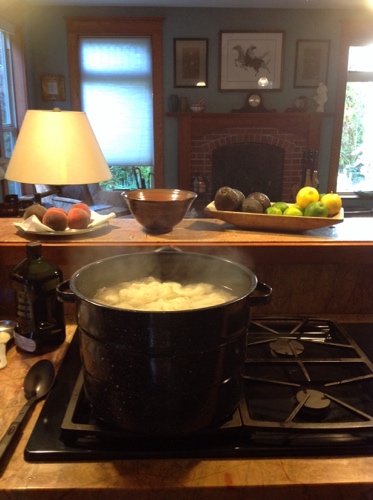
I am fascinated with painting roving and yarn with dyes stuffs. My experiences with natural dyes and vat dyeing just have not met my expectations. My yarns have turned out flat – with a one-dimensional color that was unappealing to my eye. I like variation to lend depth. Despite this, I remained intrigued by natural dyes and this class, I hoped, would teach me how to make everything work together. (Just to spoil the suspense – it did!) Preparation included treating the undyed yarn with a mordant (in this case alum). My friend and I prepped all our yarn and dried it so we could put everything in our suitcases.
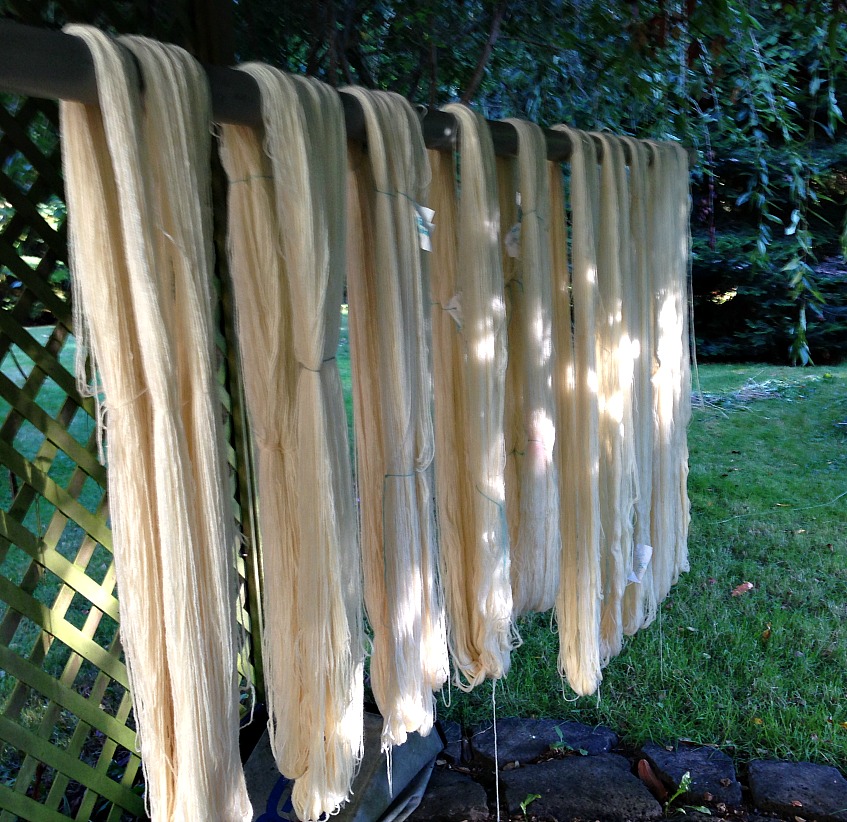
The class was great fun – well-designed for all of us to play with the dye stuff and get a sense of the colors we could create. I started with a skein of superwash merino still dry. The other four skeins went into the bucket of water to soak. Our basic recipe was 1/4 teaspoon of dye extract and a yogurt cup of very hot water. The dry skein took up an enormous amount of dye – the wet skeins were easier to paint – but the depth of color in the resulting skein was gratifying. Our teacher was an effective proponent of natural dyes, showing us how to get the best result from our materials and giving us hints about how to manage different preparations to get colors we might like. We processed the skeins by steaming them for an hour. In most cases, our colors really changed in that last step – clearly it will take a lot of experience to be able to predict the end result. Unfortunately, I didn’t think to take pictures of the “before” but below you can see the “after.” The skein on the far right was the one we painted dry (see how deep the color is?) and two skeins had some silk, making them shimmer a bit.
Once we got back to the Pacific NorthWest, we washed our skeins with Synthropol and dried them again (it took a lot longer here). I then labeled and tagged them to remember which dyes I had used.
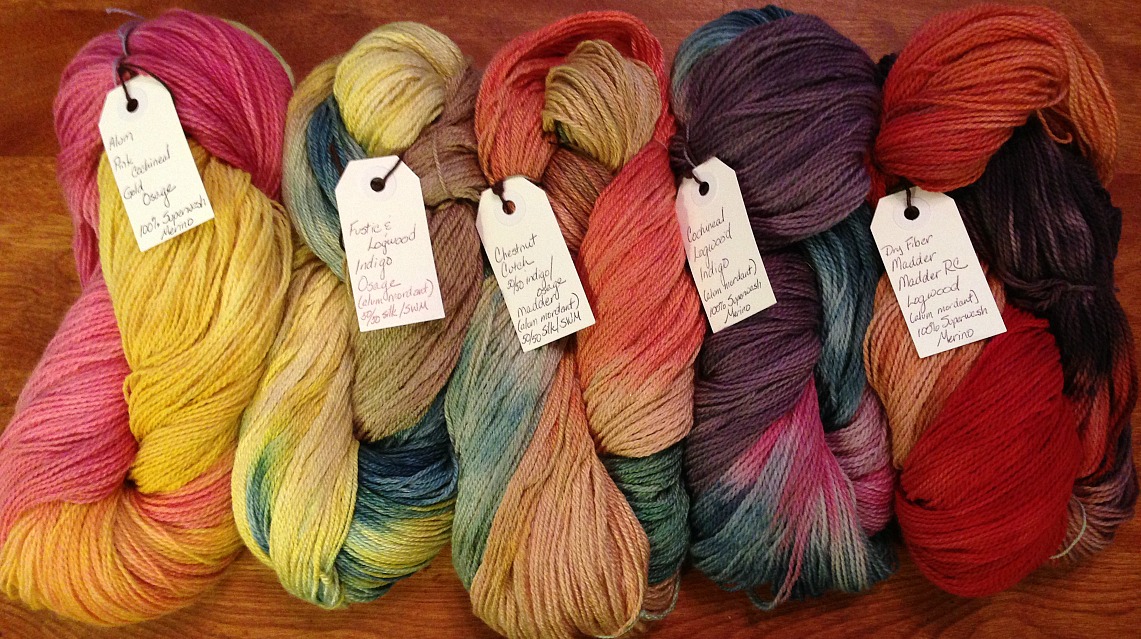
What I learned:
- The fundamental process is the same as it would be for acid dyes, but acid dyes don’t require the mordant.
- Superwash wool absorbs the dyes better
- While the dry skein was harder to paint, the colors were more vibrant
- Without experience, it is hard to create pleasing combinations of color
- Take lots of notes and wipe your gloves before you touch anything
- Some dyes need more than the simple formula we used (like cutch) – work with a reliable resource to make sure
- If you want yarn to dry fast, I recommend a sunny porch at 7000 ft in altitude in the high dessert of New Mexico!
I walked away from the class with the experience I had hoped for and 5 lovely skeins. I still have a burning question, however: why is it so hard to get a pretty yellow!?!?
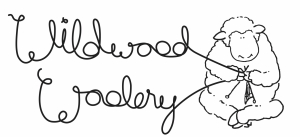
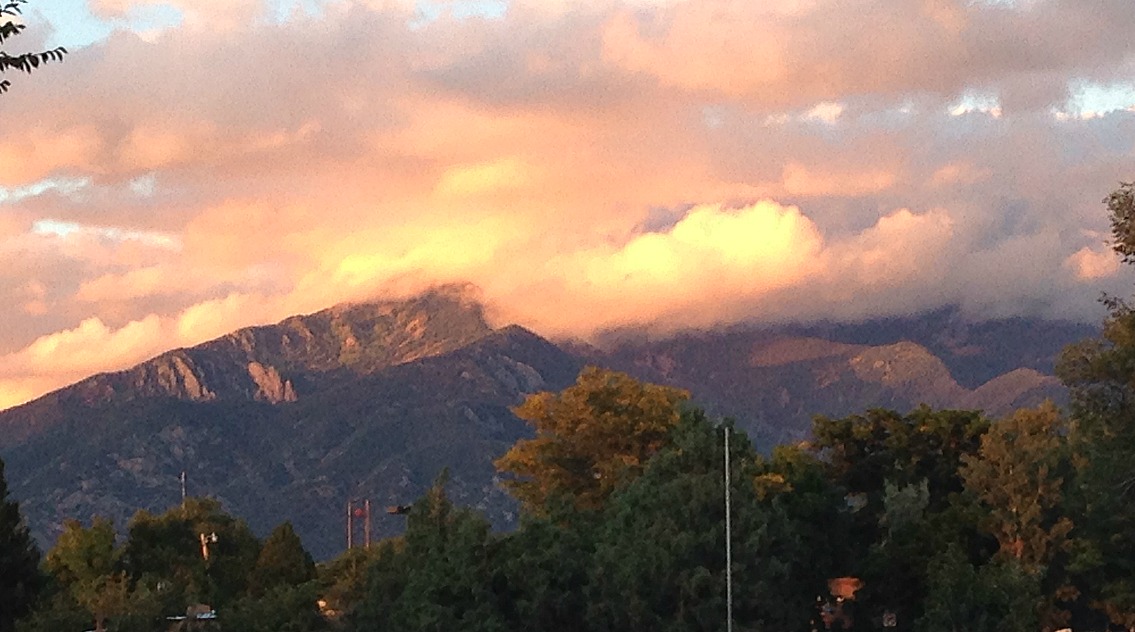
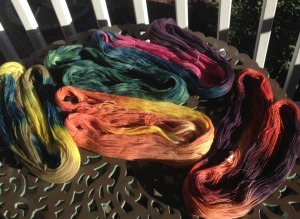
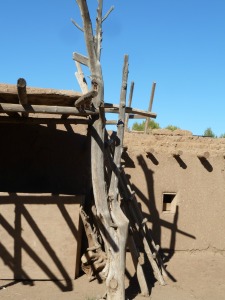
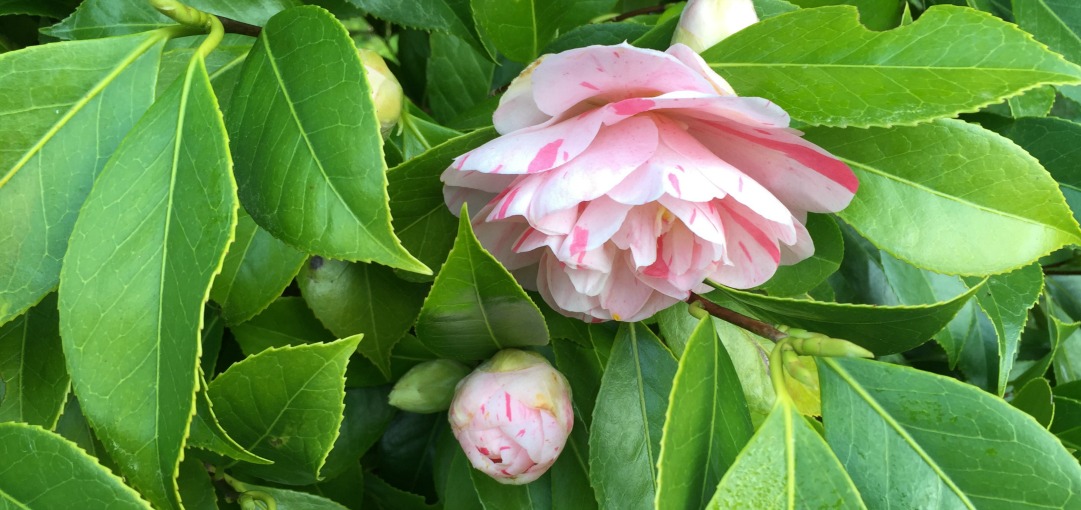
Your commitment and passion radiate in each paragraph, inspiring readers continuously.
Kudos to you for sharing your personal experiences; it makes a personal touch to your content.
Personally, I’m a big fan of how straightforward and concise this post is. You easily conveyed the information and I respect that.